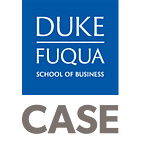Fundación Capital: Pearls of Scaling Wisdom
As part of this Scaling Snapshot, see also Fundación Capital’s Organizational Overview, Getting Ready for Scale, and Scaling Strategies. You can find the full scaling snapshot PDF here.
1. Prioritize Co-Creation.
Our “secret to success” is co-creation. We don’t design in a vacuum or come with ready-made solutions. Instead, our role is to drive co-creation, which requires us to manage the “build-measure-learn” agile development process together with partners. Our solutions are most effective when they leverage partners’ existing networks and scaffolding and lean into their priorities, helping them see how the solution fits well within their standing investments. Co-creation drives ownership and capacity, builds trust, and generates efficiencies by embedding solutions into existing systems.
2. Create “Wins” for All Stakeholders
We have found that partnerships require us to be chameleons — meaning we have to immerse ourselves in the environment to understand what drives each of our stakeholders. For example, when we launched Proyecto Capital, a regional initiative to embed financial inclusion into social protection systems in Latin America, we first identified our stakeholders’ pain points. We found that governments were struggling with the digitization of cash transfers, financial service providers were facing difficulties engaging with low-income clients, and the clients themselves lacked the financial capabilities to interact effectively with the financial system and take advantage of their cash transfer funds. By adding value to policymakers, banks, and low-income women, we were able to create “wins” for all stakeholders — at least nominally. The initiative still faced hurdles, (e.g., balancing bureaucratic restrictions with governments), but, by chipping away at the core of the problem and working simultaneously on all levers, we were ultimately successful in improving the enabling environment and increasing the financial prospects for millions of women.
3. If Government Partnerships are Critical for Scale, Make Them Part of Your Organizational DNA
For us, government partnerships were part of our founding story. We know that for them to work there has to be mutual trust, a clear value-add, and, ultimately, the funding to commit to a partnership beyond a particular project. Social ventures exploring government partnerships should consider whether it is the right fit for their mission and staff, and also recognize that they could jeopardize the government’s trust of all outside partners if the partnership goes awry. If you are committed to partnering with government, set yourself up for success by:
- Actively listening to the government’s needs, concerns, and goals.
- Clearly articulating your value proposition with respect to the partnership.
- Letting your government partners be the ones to shine if you’re successful.
- Ensuring that you can adapt to government funding cycles and know what they can and cannot fund, particularly if you are hoping to receive public sector funding.
- Checking that your funders value government partnerships and are willing to be flexible on timelines — because it may take longer than you anticipated to get things up and running.
- Identifying a “champion” from within the government to help guide you and collaborate. Note that champions can exist at many levels and may even be at auxiliary institutions.
4. If People are Core to Your Business, Be Crystal Clear on the Type of Talent You Need
Our entire business hinges on relationships, so our staff is critical to success. Making a hiring mistake can set your work back by years and cost you your most critical assets: reputation and social capital. We have a small team but many roles to play — from setting up a program to scaling it — so we look for people who can wear many different hats. To identify those individuals, one tactic includes framing the interview as a two-way process in which we describe the nature of the work and expectations to ensure that there is an awareness of the organization’s culture and the likely tasks. For example, we will highlight that a program coordinator needs to be as comfortable talking to the Minister of Finance as she is with a woman in the field. Finally, we value diversity and celebrate our staff’s passions outside of work as well as their backgrounds, noting that there are more than 20 different nationalities represented by our 70-person staff.
5. Don’t Get Stuck in the Sunk Cost Fallacy
Many think that deciding when to enter a country is the hardest decision, but we see the hardest decision as determining when to stop investing when the work is not progressing. Key to making this decision is establishing checkpoints along the road to be sure all partners — and especially government partners — are still viewing the work and the social venture positively. We have found it helpful to establish KPIs related to depth and breadth of expected impact, as well as metrics around financial sustainability, which we review regularly. We also pay close attention to innovation as a metric, considering the extent to which we are continuing to learn or generate new opportunities within a particular country. If the work is not progressing, we should unload the sunk costs and move our resources elsewhere. We can always return when there are better opportunities, and we check back in regularly with contacts to ascertain that potential — whether it is a change in government leadership, a new partnership, or a funder preference.
Published March 2019. Find the full Scaling Snapshot PDF at https://rebrand.ly/fundacioncapitalscaling.
Authored by Erin Worsham, Kimberly Langsam, and Ellen Martin.
